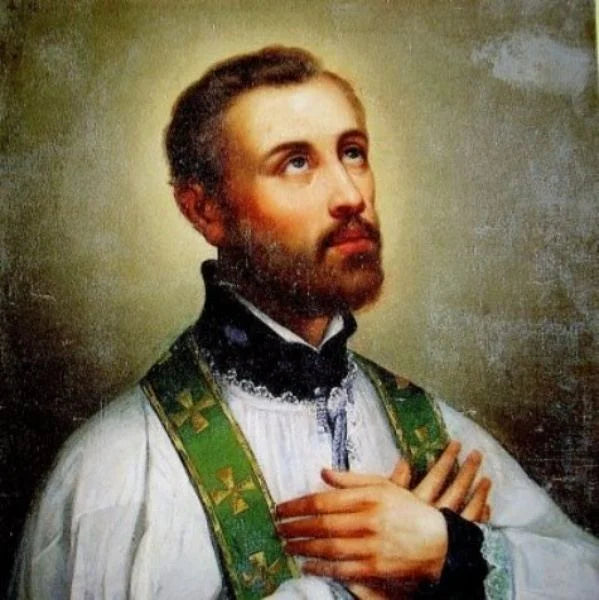
From Merchant to Martyr: The Unexpected Journey of Saint Gonsalo Garcia
|
|
Time to read 4 min
|
|
Time to read 4 min
Saint Gonsalo Garcia isn't your typical saint story. Born in the 16th century, Gonsalo's life took a surprising turn, leading him from a life of commerce to a place of martyrdom in faraway Japan. His story offers a glimpse into a fascinating period of cultural exchange and religious persecution, reminding us of the enduring power of faith.
Early Life in Portuguese India:
Gonsalo Garcia was born around 1556 in Bassein, a Portuguese colony on the west coast of India. His father was a Portuguese soldier, while his mother hailed from the local Konkani community. Little is known about his early life, but it's likely he received a good education and may have even assisted at the local church.
A Change of Course:
Gonsalo's initial path seemed destined for commerce. He traveled to Macau, a Portuguese trading post in China, and established himself as a successful merchant. However, fate had a different plan in store for him.
Encountering Christianity Anew:
While in Macau, Gonsalo came into contact with Jesuit missionaries returning from Japan. The stories of their work and the persecution they faced ignited a spark within him. Despite his comfortable life as a merchant, Gonsalo felt a strong pull towards a more religious life.
A Journey of Faith:
Against all odds, Gonsalo decided to join the Jesuit order. He understood the risks involved – Christianity was facing severe repression in Japan at the time. However, his newfound faith and dedication to spreading the message of Christ were unwavering.
A Life Dedicated to Service:
Gonsalo arrived in Japan in 1579, not as a priest, but as a lay brother. He worked tirelessly alongside the Jesuits, assisting with missionary work, learning the Japanese language, and building relationships with the local people. His fluency in Japanese and his kind demeanor made him a valuable asset to the mission.
Facing Persecution:
The late 16th century saw a dramatic shift in Japan's tolerance towards Christianity. The rise of new shoguns led to brutal persecution of Christians, both foreign and Japanese. Gonsalo, along with other missionaries and converts, was captured and imprisoned.
A Legacy of Faith and Martyrdom:
In 1597, Gonsalo Garcia, along with 25 other Christians, was martyred in Nagasaki. Their execution sent a chilling message, but their unwavering faith also served as a powerful testament to the strength of their convictions.
Sainthood and Legacy:
In 1862, Pope Pius IX canonized Gonsalo Garcia and his companions, recognizing them as martyrs for their faith. Saint Gonsalo Garcia is revered as the first canonized saint of Indian origin and a patron saint of peace.
A Story for Our Times:
Saint Gonsalo Garcia's life offers valuable lessons for our times:
Saint Gonsalo Garcia's journey from merchant to martyr is a testament to the enduring power of faith and the pursuit of a higher purpose. His story continues to inspire generations across the globe, reminding us of the importance of following our convictions and working towards a more peaceful world.
Saint Gonsalo Garcia's story is undeniably inspiring. However, a deeper look reveals a man grappling with the realities of his time, navigating a complex world of cultural exchange and religious conflict.
While the focus on Saint Gonsalo Garcia's martyrdom is understandable, it's important to consider the broader context of his life. The motivations behind his conversion and his decision to join the Jesuits in Japan deserve further exploration.
Was it purely religious devotion, or were there other factors at play?
Some historians suggest that the decline of his merchant business or a personal crisis might have contributed to his spiritual awakening. Understanding these possibilities allows for a more nuanced comprehension of his life choices.
The Jesuit Mission in Japan:
The Jesuit mission in Japan was not without its controversies. Their methods of spreading Christianity, including accommodation of certain cultural practices, were criticized by some within the Church. Examining these debates allows for a more balanced understanding of Gonsalo's role within the larger picture.
A Legacy Open to Discussion:
Saint Gonsalo Garcia's legacy is not without its complexities. The nature of colonialism and the power dynamics inherent in missionary work during that era require ongoing conversation.
Can we truly celebrate the spread of Christianity through colonialism?
By acknowledging these complexities, we can engage with Saint Gonsalo Garcia's legacy in a more critical and thoughtful manner.
Learning from the Past, Inspiring the Future:
Engaging with the complexities of Saint Gonsalo Garcia's life offers valuable lessons for our times:
Beyond "The First Indian Saint":
Saint Gonsalo Garcia's legacy extends far beyond the title of "the first Indian saint." He is a symbol of religious conviction, a reminder of the challenges and rewards of interfaith encounters, and a call for critical reflection on the historical context of religious missions. As we celebrate his life, let us embrace the complexities of his story, using it as a springboard for deeper understanding and promoting a more peaceful and tolerant world.